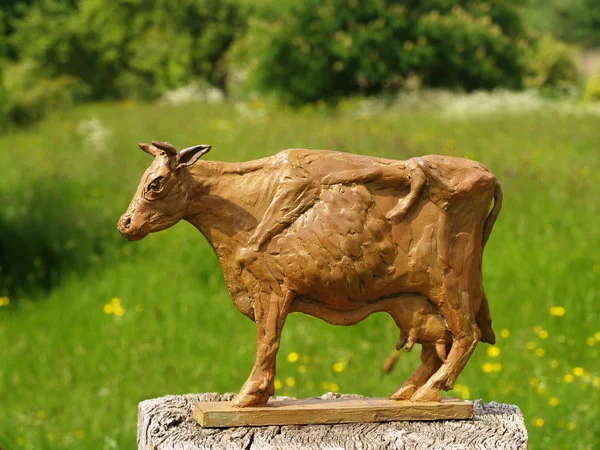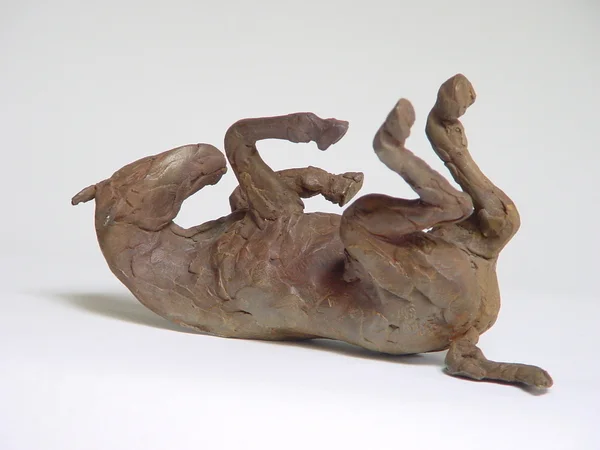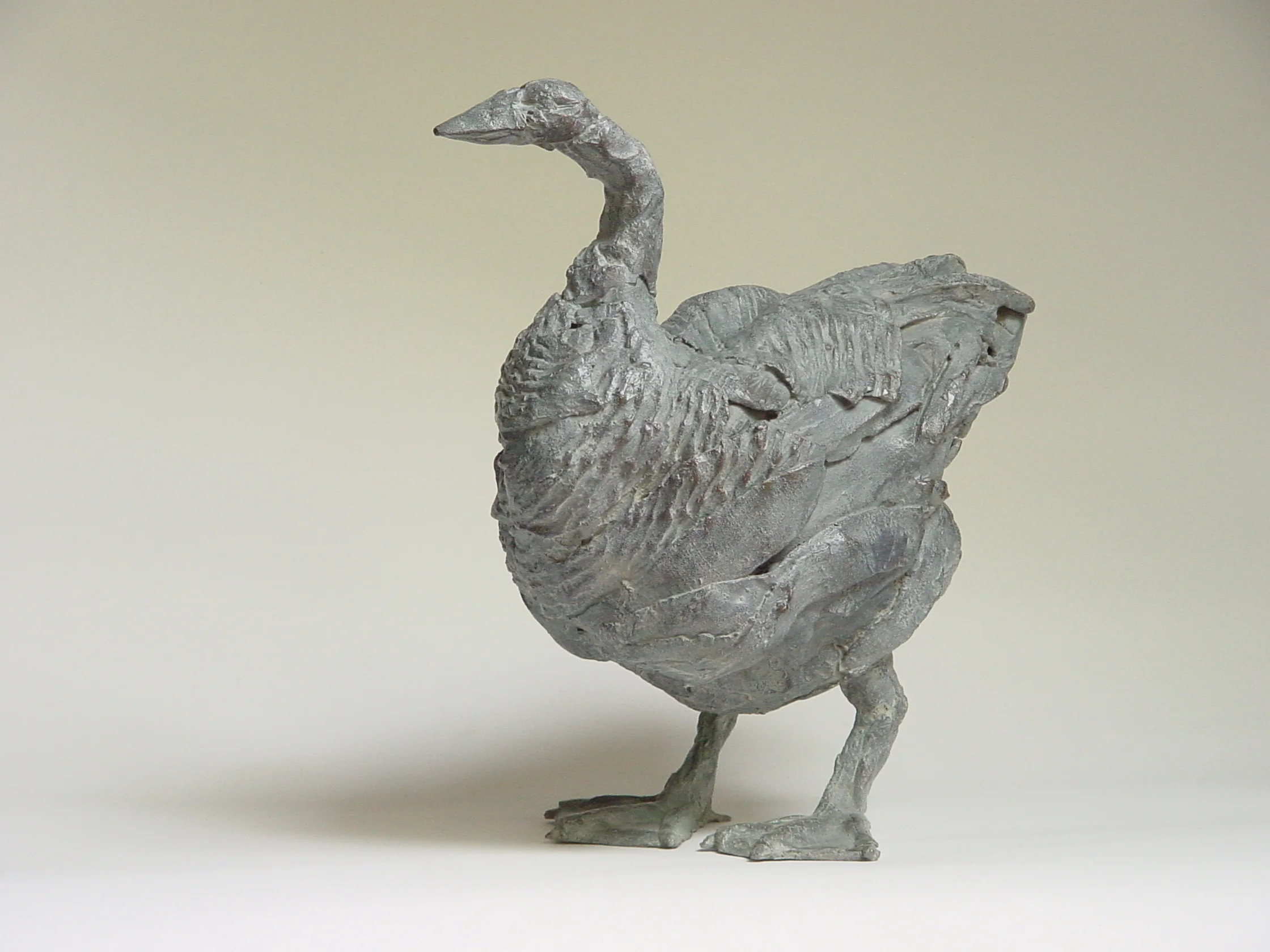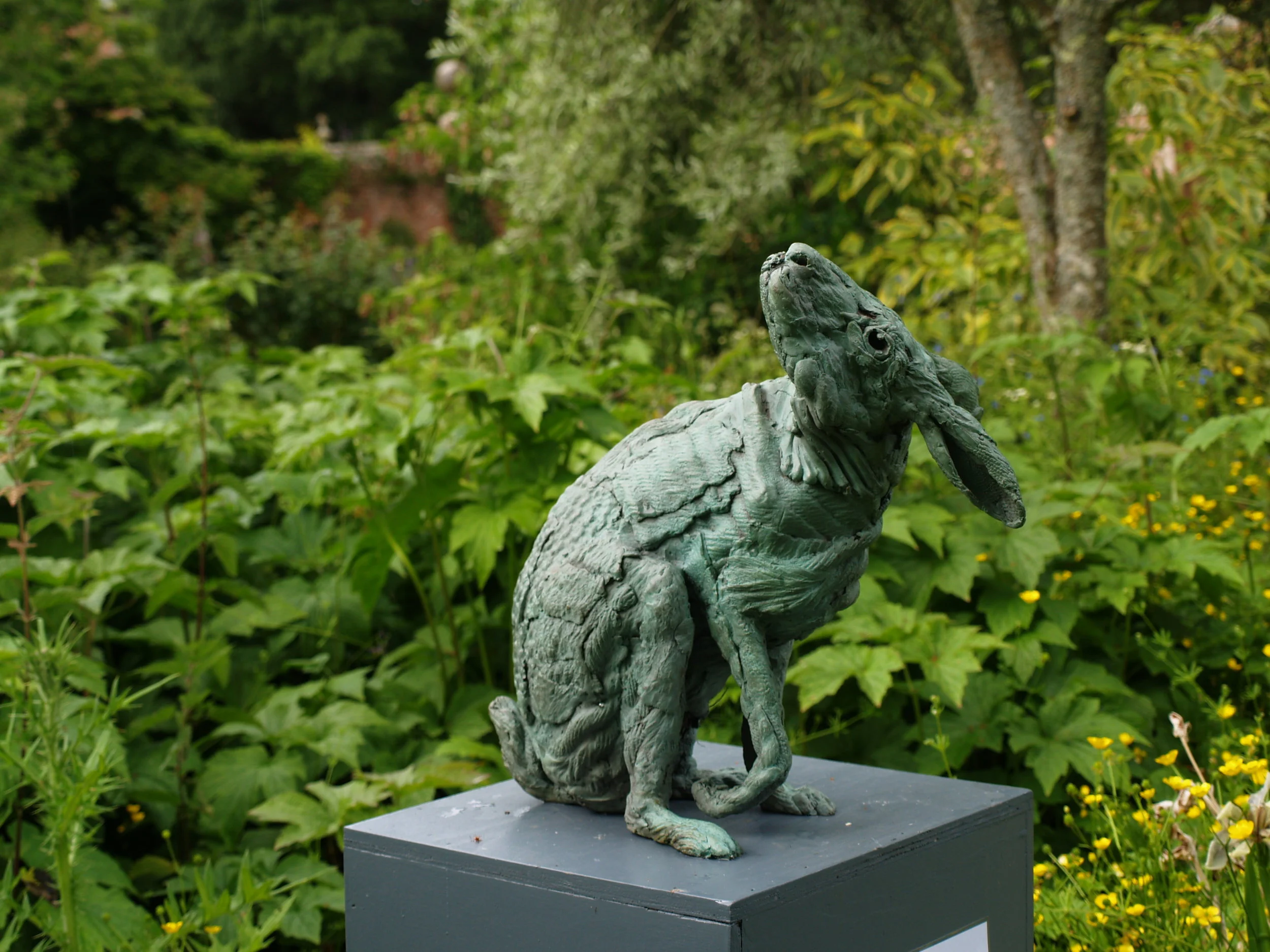Marjan Wouda
Marjan Wouda has her work spread far and wide, from New Zealand and Hong Kong to Europe, the Caribbean and America, bought or commissioned by private collectors and public institutions. She has exhibited in London, Amsterdam, The Hague, Germany, Dublin, the US and around the UK; and made sculptural responses to public spaces in London, Greater Manchester, Newcastle-upon-Thyne and green spaces in Lancashire and Yorkshire. Her biggest collector was Felix Dennis, poet and publisher (one of the Oz-three), who commissioned four over-life-size pieces for his sculpture garden (such as one of Charles Darwin astride a giant tortoise, and another of a woolly mammoth) and another many-more-times-life-size piece of two mating tortoises for the Caribbean island of Mustique. Sir Kyffin Williams, RA, the defining 20th-century artist of Wales, describes Marjan as “... someone whose work is indeed true sculpture. She possesses an almost surreal twist to her work that immediately makes it thought provoking. Some of her work has a tenderness that is most moving, an emotion that is usually lacking in modern sculpture.”
Born in 1960 on her family’s dairy farm in the North of Holland, Marjan Wouda came to England when she was nineteen, hungry for independence and experience. She attended Art College in London, completing her formal training in Manchester with an MA in Fine Art/Sculpture. Marjan currently lives with her family in the Pennine Hills of Lancashire, occupying an old house with a studio in the outbuildings and chickens in the garden.
ARTIST STATEMENT
I make sculptures mostly of animals. The underlying theme in all my work, however, is the human experience. Animals are used, like characters in a dream or story, to explore and give expression to it. Nursery rhymes, proverbs and stories all use this same process, and I often visit these literary sources to find the right animal for what it is I need to look into. Often too, these stories serve as a starting point for series of pieces such as the fox and the cockerel from Chaucer’s The Nun’s Priest’s Tale, or the characters populating nursery rhymes (such as Old Mother Hubbard’s wonderful dog.) All my work starts with drawing; sculpture, for me, is a kind of drawing in 3D. I make small hand held pieces in wax or clay to explore the posture and the 3 dimensionality of the piece. Posture is my most powerful tool; it is what imbues a sculpture with emotional resonance. Then there is play, by which I mean: responding creatively to the medium I have chosen to work with. It is important to me that each piece is open ended; that the material is allowed its voice and that each sculpture is an adventure. Most of my sculptures originate in clay, which is sometimes fired but more often cast into bronze and patinated in strong colours. The surfaces are highly tactile; one is aware of the layering of the clay and a playful exploration of the material with textures of everyday materials imprinted onto the clay or cast into the sculpture.







